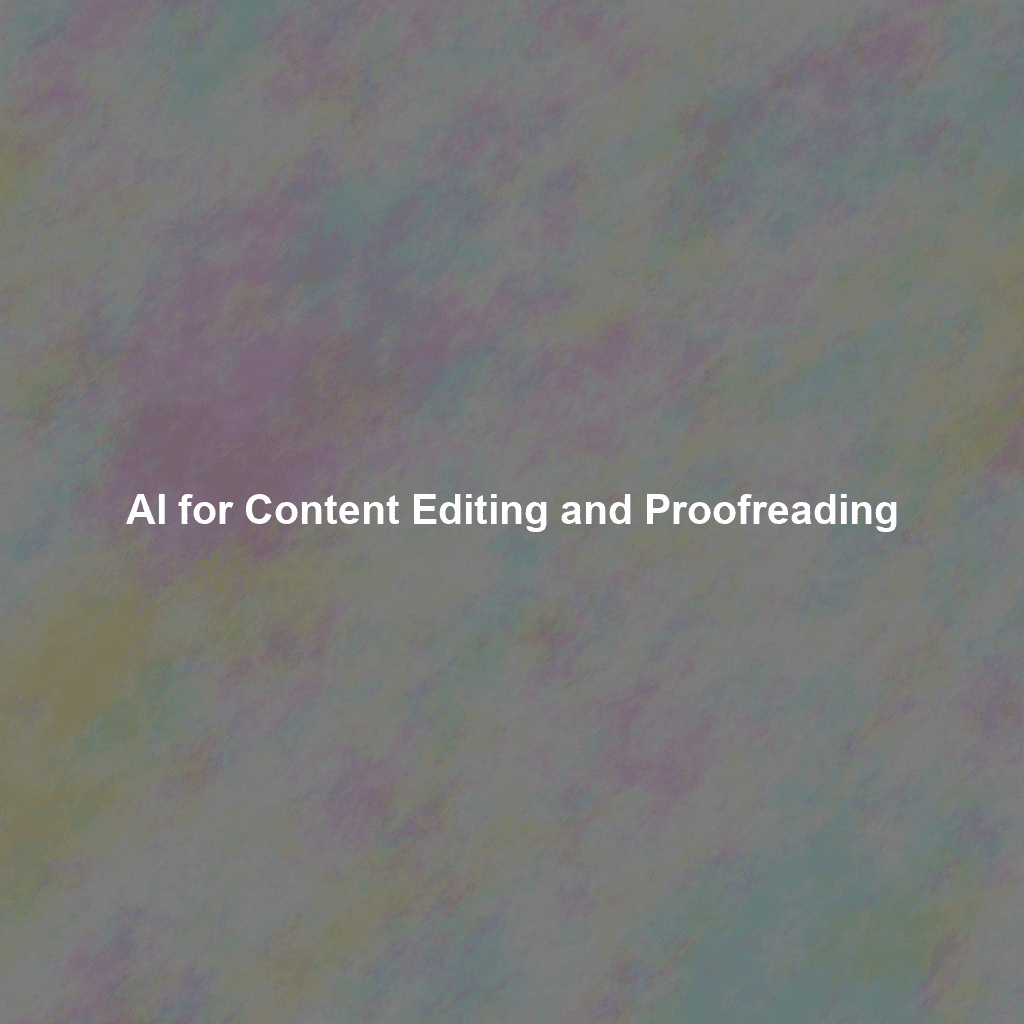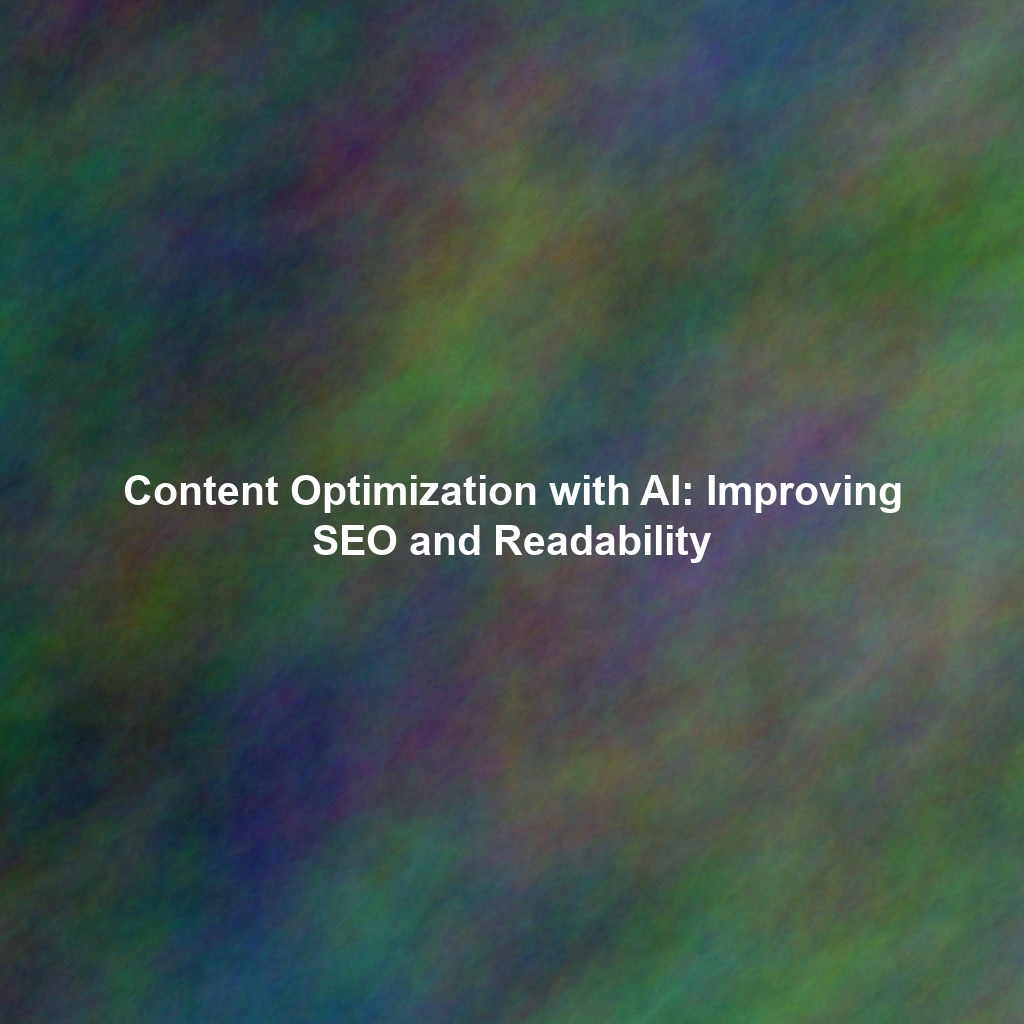The Rise of AI in Content Refinement
In the ever-evolving landscape of content marketing, precision and polish are paramount. A single typo or grammatical error can erode credibility and impact your brand’s image. Fortunately, artificial intelligence (AI) is emerging as a powerful ally, transforming the way we approach content editing and proofreading. This technology is no longer a futuristic fantasy; it’s a present-day reality, offering content creators and marketers tools to enhance accuracy, improve efficiency, and elevate the overall quality of their work.
Why AI is Changing the Editing Game
The traditional methods of editing and proofreading, while still valuable, can be time-consuming and prone to human error. Relying solely on manual processes often means missed mistakes and inconsistencies that slip through the cracks. AI-powered tools address these limitations by offering a more comprehensive and objective approach. They can analyze text with remarkable speed and accuracy, identifying errors that human editors might overlook. Furthermore, AI can provide suggestions for improving clarity, style, and tone, ensuring that your content resonates with your target audience.
How AI Enhances Content Editing and Proofreading
AI’s impact on content editing and proofreading is multifaceted, offering a range of capabilities that significantly improve the quality and efficiency of the process.
Grammar and Spelling Checks on Steroids
Traditional grammar and spelling checkers have been around for years, but AI takes these functionalities to a whole new level. AI-powered tools don’t just flag obvious errors; they understand context and nuance, identifying more subtle grammatical mistakes and suggesting more accurate corrections. They can also detect inconsistencies in punctuation and capitalization, ensuring that your content adheres to established style guides.
Style and Tone Analysis for Maximum Impact
Beyond grammar and spelling, AI can analyze the style and tone of your writing, providing insights into its readability, clarity, and overall impact. These tools can identify instances of passive voice, jargon, and overly complex sentence structures, suggesting revisions that make your content more accessible and engaging. They can also help you maintain a consistent tone throughout your content, ensuring that it aligns with your brand’s voice and values.
Plagiarism Detection: Protecting Your Originality
Originality is crucial in content marketing. AI-powered plagiarism detection tools go far beyond simple keyword matching. They analyze text for similarities across a vast database of online content, identifying even subtle instances of plagiarism, whether intentional or unintentional. This helps ensure that your content is unique and protects you from potential copyright infringement issues.
SEO Optimization: Making Your Content Discoverable
AI can also play a vital role in optimizing your content for search engines. Some tools can analyze your text for relevant keywords, suggest improvements to your meta descriptions, and help you structure your content in a way that is more easily crawled and indexed by search engines. This can significantly improve your content’s visibility and drive more organic traffic to your website.
Multilingual Support: Expanding Your Reach
For businesses targeting international audiences, AI-powered translation and localization tools are invaluable. These tools can accurately translate your content into multiple languages, ensuring that it resonates with your target audience in different regions. They can also adapt your content to local cultural norms and preferences, maximizing its impact and effectiveness.
Choosing the Right AI Tools for Your Needs
The market for AI-powered content editing and proofreading tools is rapidly expanding, with a wide variety of options available. When choosing the right tools for your needs, consider the following factors:
Accuracy and Reliability
The most important factor is the accuracy and reliability of the tool. Look for tools that have been rigorously tested and proven to deliver consistent results. Read reviews and compare the performance of different tools before making a decision.
Ease of Use
Choose tools that are easy to use and integrate seamlessly into your existing workflow. A user-friendly interface and clear instructions can save you time and frustration.
Features and Functionality
Consider the specific features and functionality that you need. Some tools focus primarily on grammar and spelling, while others offer a broader range of capabilities, such as style analysis, plagiarism detection, and SEO optimization.
Pricing and Value
Compare the pricing of different tools and choose one that offers the best value for your money. Some tools offer free trials or limited free versions, which can be a good way to test them out before committing to a paid subscription.
Best Practices for Using AI in Content Editing
While AI can be a powerful tool for content editing and proofreading, it’s important to use it effectively and responsibly. Here are some best practices to keep in mind:
Don’t Replace Human Editors Entirely
AI should be seen as a tool to augment, not replace, human editors. While AI can identify errors and suggest improvements, it lacks the critical thinking and creative judgment that human editors bring to the table. A human editor can catch nuances, contextual errors, and subtle style issues that an AI might miss.
Review AI Suggestions Carefully
Don’t blindly accept every suggestion that an AI makes. Review each suggestion carefully and consider whether it actually improves the quality of your content. AI is not always perfect, and sometimes its suggestions can be misguided or inaccurate.
Use AI to Focus on Higher-Level Tasks
By automating routine tasks like grammar and spelling checks, AI can free up human editors to focus on higher-level tasks, such as ensuring the overall clarity, coherence, and effectiveness of the content. This can lead to a more efficient and productive editing process.
Stay Updated on the Latest AI Developments
The field of AI is constantly evolving, with new tools and techniques emerging all the time. Stay updated on the latest developments in AI-powered content editing and proofreading so that you can take advantage of the latest advancements.
The Future of AI in Content Editing and Proofreading
As AI technology continues to advance, its role in content editing and proofreading will only become more significant. We can expect to see even more sophisticated tools that can analyze content with greater accuracy and nuance, providing even more valuable insights and suggestions. AI will likely become increasingly integrated into the content creation process, seamlessly assisting writers and editors at every stage.
One promising area of development is the use of AI to personalize content editing. Imagine a tool that can adapt its suggestions to the specific writing style and preferences of each individual author, providing tailored feedback that is more relevant and helpful. Another area of potential growth is the use of AI to generate content outlines and summaries, helping writers structure their thoughts and create more compelling narratives.
Conclusion: Embrace AI to Elevate Your Content
AI is revolutionizing content editing and proofreading, offering unprecedented opportunities to improve accuracy, efficiency, and overall quality. By embracing AI-powered tools and adopting best practices, content marketers can elevate their work and achieve greater success. The future of content creation is undoubtedly intertwined with AI, and those who embrace this technology will be best positioned to thrive in the ever-competitive digital landscape. So, explore the options, experiment with different tools, and discover how AI can help you create content that truly shines.
 Skip to content
Skip to content

